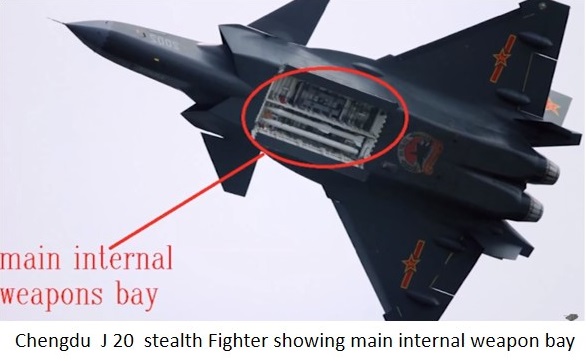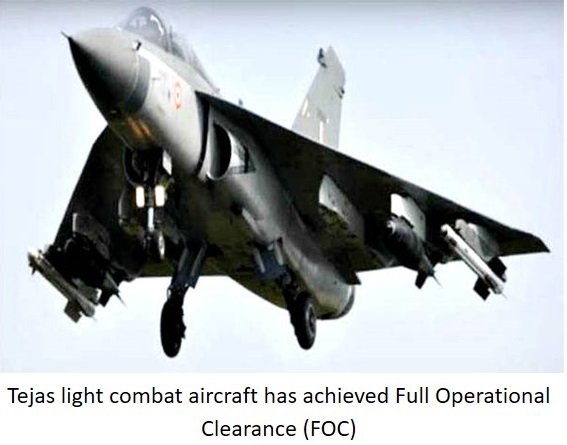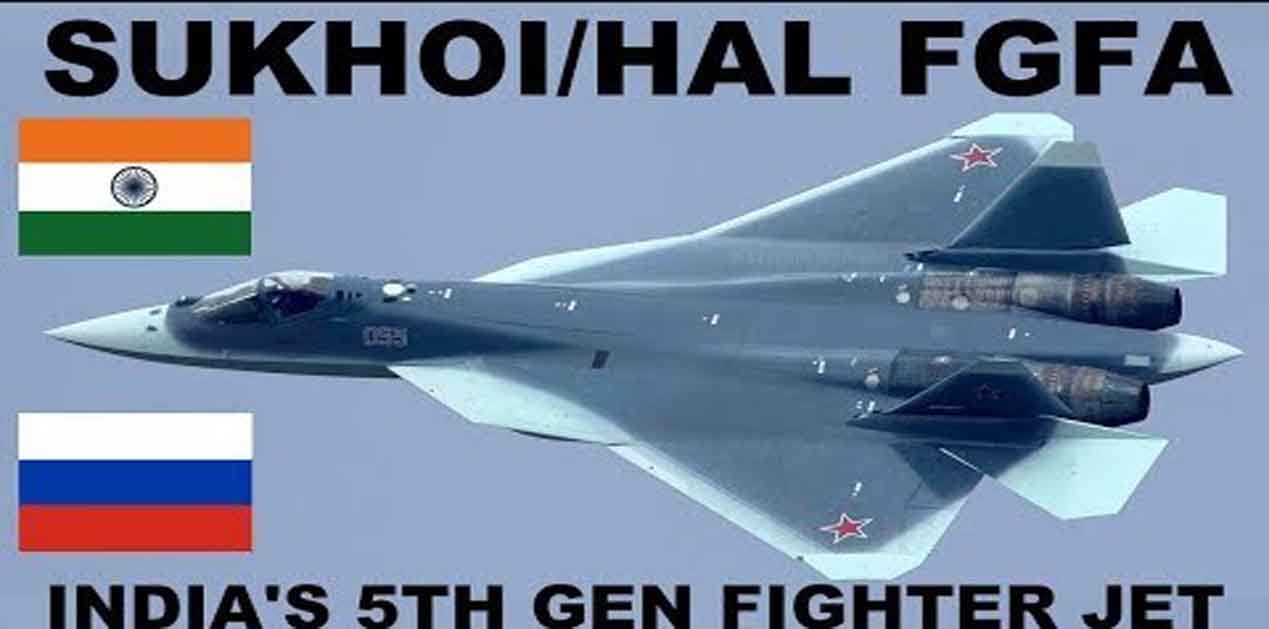Post-FGFA
On 13 Jul 18, the Defence Minister, Mrs Nirmala Sitharaman informed that India has conveyed to Russia that it will not be a part of the Project to develop a Fifth Generation Fighter Aircraft (FGFA) anymore but may join the programme at a later date1. This article attempts to analyse the various factors spread over a period of 11 years that possibly lead to such a big decision. More importantly, it tries to see the road ahead for the Indian Air Force (IAF), post the decision.
The Euphoria of BrahMos Success Story

It all started around 2005-07 during the hay days of the BrahMos success story. A major milestone was achieved when on the heels of the visit of President Vladimir Putin to India in Jan 2007, the BrahMos missile was test fired in Feb 2007 with a manoeuvrable trajectory. In this, the missile was manoeuvred in the form of an ‘S’ at a supersonic speed of Mach 2.8, a feat achieved first time in the world. Also, the submarine version of the missile was reporting ready around the same time2. The fastest cruise missile of the world was on a rising trajectory.
Amidst this atmosphere of positivity and success, India and Russia, in early 2007, took a decision to take their military cooperation to the next level by agreeing to undertake joint study and development of a FGFA. By around October of the same year, some more clarity emerged when it came to be known that the proposed joint study and development will share three aspects on a 50-50 basis. It is pertinent to note here, that these three aspects were: 1. Funding. 2. Engineering and 3. Intellectual Property (IP)3.
It took three years of run time before a Memorandum of Understanding (MoU) was signed in Dec 2010 between India and Russia to jointly undertake the preliminary design (PD) of the Indo-Russian FGFA. The partners to the MoU were the Hindustan Aeronautics Ltd (HAL) for India and Rosoboronexport and Sukhoi for Russia. The apportioned cost of PD was $ 295 mn each and the estimated time for development was 18 months. Everything seemed to be on track till this time.
It will be appropriate to clarify the number of name designations with which this project is often referred to. FGFA was to be a derivative Project of the Russian SU 57 aircraft being produced by Sukhoi for the Russian Air Force. The Indo-Russian generic name with which this derivative aircraft is generally referred to is FGFA. Another name by which this aircraft is sometimes referred to is ‘perspective multirole fighter’ or PMF. The internal (Russian) name of the aircraft is T 50 and the programme name of the aircraft is PAK FA (an acronym for ‘perspective aviation complex for frontline aviation’). This article refers to the aircraft as FGFA.
Getting back to the main thread, the events that unfolded during the eleven year period starting from 2007 when the decision was taken for joint study and development, and till 2018 when India took the decision of withdrawing from the Project, represent a sad tale of unfulfilled commitments and missed targets.
The Four Casualties4
Four major casualties took place over the years. These are briefly as elaborated hereafter.
The Work Share Casualty
In accordance with the agreed position of equal sharing of funding, engineering and IP, and having remitted its share of funding ($295 mn), when HAL approached the Russian partners for an equal work share, there was reluctance in sharing what was agreed and committed. HAL pitched for critical software components, mission computer, navigation system, cockpit displays and counter-measures dispensing system. This never came through.
In fact, after protracted negotiations for nearly five years when the detailed work share agreement ultimately got signed between the two partners in Sep 2016, India had to settle for a much lesser work share. As per open source, it only amounted to about 25 percent in component design and 15 percent in research and development (R&D). All this despite the fact that India was still slated to share the funding at 50-50. This marked the first casualty of the MoU5.
The Cost Casualty
As early as Aug 2011 and with barely an year into the PD MoU, it was estimated that the joint production of the FGFA would cost $6 bn to each partner and the production time will be 8-10 years. Faced with skewed and an unfavourable work share component, when India approached the Russian partner for a re-consideration of the 6 bn component, the latter agreed to reduce the Indian funding to $3.7 bn instead of $6 bn.
This was however short lived. India was trying to obtain that much hold on the technology of the aircraft as would give it the capability to upgrade the new fighter without Russian support. In that, when it approached the Russian side for source codes and other sensitive computer codes to control the various systems of the aircraft, there was a strong resistant in sharing what was being asked. After protracted negotiations, the Russian side agreed to share the computer codes but demanded that for such a sharing, India will have to shell out $7 bn (the earlier share for FGFA development was 6 bn each for India and Russia). In addition, when the aircraft was fully developed and ready for procurement, the cost projection was $30 bn for 144 FGFA and $135 mn for each aircraft. This represented the cost casualty of the MoU.
The Number Casualty
It is interesting to note the initial hopes of the Sukhoi Director, Mr Mikhail Pogosyan, when in 2010 he envisaged a market for 1000 FGFAs - 200 each for India and Russia and 600 for the world market6. The figures then boiled down to 250 aircrafts for Russia and 144 for India as indicated above. Another important and a strange thing happened then. As the aircraft slid down its promised performance expectations over time, Russia drastically cut down its numbers of SU 57 to just 18-24 while the balance were to be SU 35s (upgraded). India was left in the lurch with its figures and huge cost tags.
The Time Casualty
As stated earlier, a development time of 8-10 years was envisaged in 2011. Going by that count the FGFA should have been a reality by now. Open sources however report that the aircraft would not be ready anytime before 2020 (and thereafter one can count several more years for its operationalisation). This represents the time casualty.
Performance Sub-optimality’s
While all the above stated casualties could still be taken as fait accompli, what became absolutely non-negotiatiable was the performance deficit.
The Basic Virtues of FGFA
In order to appreciate what is stated above, it is pertinent to mention certain basic combat virtues of a typical FGFA, in the absence of which the aircraft does not actually qualify to be one.
At the onset, the FGFA engine must produce that much thrust which would enable the aircraft to maintain pilot control and perform such manoeuvres that far exceed those that are possible using purely the aerodynamic mechanisms such as, ailerons, elevators, flaps, air brakes and rudder. Such manoeuvres could be vertical take-off and landing (VTOL), short take-off and landing (STOL) or such other manoeuvres as the 'Pugachev's cobra manoeuvre (see the picture below), Herbst manoeuvre, J turn etc. -capabilities called super-manoeuvrability. It permits an aircraft to out-turn and hence out-perform an opponent when engaged in an aerial combat.

This capability is normally achieved by manipulating the direction of the thrust from the engines of the aircraft in attitude and angular velocity (thrust vectoring) and (or) making use of the inherent instability of the aircraft built in as a design feature. For this to happen, the thrust-to-weight ratio of the aircraft needs to very high so that the engine has sufficient power always to recover the aircraft at all times during and after the manoeuvre when the machine could be reaching a stalling speed.

The second important virtue of a typical FGFA is super-cruise capability. It is the capability of an aircraft to undertake sustained supersonic flight with useful payload without having to fire the after-burners (after-burner is an attachment at the end of a jet engine that injects fuel into the exhaust to burn the oxygen left in the exhaust stream thus adding power to the machine for a short burst such as at take-off or during dog fight).
The flip side of after-burner is that not only it consumes a lot of fuel, but also increases the heat signature of the aircraft many folds, making it highly vulnerable to heat-seeking missiles. FGFAs can cruise at super-sonic speeds without using after-burners, for instance, F 22 Raptor, a frontline FGFA, is the first US super-manoeuvrable aircraft. It can cruise at Mach 1.5 without firing after-burners.7 It has thrust vectoring and a thrust-to-weight ratio of 1.26 at 50 percent fuel. The advantages of super-cruise in aerial combat are self-explanatory.
Talking about the capabilities , while all the above is stated at one end, at the other it is to be understood that incorporating everything on a single flying platform has its own downside. The overall capability suit has to be optimally tailored by trading those capabilities that are considered less essential with those that are considered inescapable. For instance, VTOL and STOL capability may be at the cost of manoeuvrability. Suffice to say, that the selection of the overall capability suit is a highly complex issue demanding decades of hands-on-experience and domain expertise.

Getting on further, probably one of the most important combat virtue of an FGFA is its stealth capability - capability to avoid detection by sensor by reducing reflection, emission of radar, infrared, visible light, radio-frequency and audio signals. A stealthy aircraft is also called a low observable target. Stealth increases the survivability of an aircraft in a hostile environment and consequently enables it to deliver its lethal load in a far more effective and an unhindered manner.
The cutting edge stealth features include special radar absorbent materials (RAMs) based on nano-materials, plasma coatings etc. that are used as body paints, having on board such radars that have a low probability of intercept (LPIR) by adversarie’s sensors and having the designs of aerodynamic surfaces such as wings, tail plain, air intakes, bypass nozzles etc. in such a way as to deflect the sensor energy incident on it in a definite direction away from mother sensor.
One of the important stealth feature in a contemporary stealthy aircraft is the total absence of external strong points to carry weapons. Weapons carried on such strong points used to be a sure giveaways about the presence of the aircrafts. Today the weapon bays are all hidden inside the main aircraft body and designed to be exposed only at the time of firing, that also one weapon at a time; China’s J 20 has this feature.

The sum total of all the stealth capability by various features of the aircraft is measured in terms of its radar cross-section signatures or RCS for short. Simply put, RCS of an aircraft is a measure of how detectable the aircraft is by the radar. A larger RCS indicates that the aircraft will be more easily detected.
Measuring the FGFA
The FGFA under discussion falls short in terms of the capabilities mentioned above. Firstly, the current engine (Saturn AL 41 F1 S or Izdeliye 117) is an old one which was also on Su 35 Flanker. This engine, besides producing a thrust of 32,500 Ibs does not have adequate thrust-to-weight ratio as will be required to ensure super manoeuvrability and super cruise as explained above. Besides, the engine is not modular which makes its maintenance, repair and upgrade that much more difficult. The new engine Izdeliye 30 (producing a thrust of 39,566 lbs) is not likely to be available before 2020.
The most critical failing of this aircraft lies in the field of stealth. For instance, if at a particular range and altitude, the RCS of F 22 is 0.0001m2, the same for FGFA will be 0.1-1 m2. Translated into practical terms it means, that if a sensor can detect a F 22 aircraft at 100 km, then with the same capabilities it will be able to detect the FGFA at 562 km.
Now a word on the weapon bays. As stated earlier, there used to be a time when the external strong points under the aircraft fuselage carrying a known inventory of armaments were a sure give-away of the aircraft's identity. As stealth caught on, the aircrafts pulled in their weapon loads into their internal bays, opening the weapon bays at the precise moments of firing. That, however, opened the entire arsenal load at a critical time. Then came the canted trapeze. When it was time for firing, the canted trapeze would lower one missile into the air stream at a time without directly exposing the entire bay all the time (F 22 Raptor). However, when the canted trapeze was lowered, the weapon bay was again open and visible, albeit for a short time till the firing took place. The Chinese J 20, did one better in the design of the trapeze. In permitted the weapon bay to be closed even before the firing is to take place thus permitting only one missile exposure at a time. Another smart stealth idea is to have two types of weapon bays. One main weapon bay storing long range air-to-air missiles, the other one storing short range missiles and other weapons. The logic of smaller bay yielding smaller exposure and quicker reaction time is self-explanatory.
Comparing the above stealth features with respect to FGFA, following is are inferred:-
- While the aircraft has the latest design feature of two weapon bays, the problem is that some of the designed weapon loads such as KH 35 UEm subsonic anti-ship missile or the nuclear capable BrahMos A cannot fit into the internal weapon bays and must hang out from the strong points under wings. Nothing can be a better give away than missiles hanging outside the aircraft.
- Experts also note that FGFA basically enjoys frontal stealth while the trend today (F22, F 35, J 20) is to have ‘all aspect stealth’. The rear portion of the aircraft is particularly non-stealth. Some experts have compared it to a ‘truck’.
- This aircraft is Russia's first effort at a stealth design. As can be expected, the aircraft is a rough and ready build, but lacking precision tolerances.
Notwithstanding all that has been said, it will be unfair if some of the fantastic features of the FGFA are not counted here. The side-facing cheek mounted radars along with nose mounted X band active electronically scanned array (AESA) radar provide a much better 3600 field of view and a much enhanced situational awareness to the pilot than any other aircraft in its class. This arrangement also permits a manoeuvre called ‘beaming’, wherein, an FGFA can sharply turn 900 to an adversary's pulse doppler radar (PDR) which is tracking it. By doing so, it greatly lowers its chances of detectability (by sudden 900 turn, the relative velocity of FGFA with respect to PDR reduces drastically due to which the adversary's PDR drops ‘lock-on’ with the FGFA, while the latter, due to the positioning of its radars, still retains its capability to engage the enemy aircraft.
Next, the infrared search and track (IRST) radar atop the aircraft's nose in addition to the main radars enhances the aircraft's capability to detect and engage stealthy targets which remain invisible to RF based main radars. The directional infrared counter-measure system features a number of turret mounted laser beam pods. These pods are ideal to blind infrared heat seeking and man portable missiles, and dual mode air-to-air missiles.
The aircraft has a very robust landing gear and a strong mud guard over the nose wheel. This will enable the aircraft to operate from austere airfields without much preparation.

While all the goodies may stand on one side, the following considerations must weigh the decision:-
- The HAL never got the quality or quantum of ‘work share’ as was agreed to during the MoU.
- The costs got hacked up substantially to a level at which better aircraft and technologies could either be developed in-house or purchased in the world market.
- The time frame went off the track as opertaionalisation of the machine still stands several years into the future.
- Conscious of the underperformance of the final product, the Russians themselves drastically down scaled their requirement of FGFA from 200 aircrafts to a meagre 18-24 putting into doubt our huge initial requirement of 144.
- The aircraft's engine is underpowered and non-modular. This not only makes the maintenance, repair and upgrade very cumbersome, but also, prohibits the aircraft to achieve the standards of super cruise and super manoeuvrability as are essential for a FGFA.
- Most importantly, the aircraft is severely deficit of stealth capability; as one expert has opined "if you don't have (adequate) stealth you are not going to be in the fight".
- Aeronautical Development Agency (ADA) has already started the ground process to make AMCA project a reality. Tender notices have been issued to various vendors to manufacture technology demonstrator for AMCA jets in the next four years of signing of the contracts. At Aero India 2019, ADA is likely to showcase a full-scale final design of the AMCA. Many international aero-engine companies have already shown interest in participating in the programme to meet the power requirements of the AMCA.
- Tejas has moved forward of its Final Operational Clearance (FOC) after completing a series of captive flight trials to clear Derby for the full operational capability in the entire FOC envelop and after demonstrating the safe operation of the aircraft during the missile plume ingestion into the aircraft engine under worst case scenarios. With an order book of 83 for Mk 1A and 201 for Mk 2, Tejas has created an aerospace eco-system that can be a good firm base for AMCA to take off and cement it further10.
- https://www.economictimes.indiatimes.com>idia-tells-russia-to-go-ahead-with-FGFA-says-it-may-join-at-a-later-stage. accessed on 25 Jul 18.
- "brahmos success story-OPINION- The Hindu, Feb 8, 2007.
- https://www.en.wikipedia.org>sukhoi/hal-fgfa. Accessed on 05 Aug 18.
- https://www.thediplomat.com>india-pulls-out-of-joint-stealth-fighter-project-with-russia. accessed on 05 Aug 18.
- https://www.economictimes.indiatimes.com>india-and-russia-agree-on-details-of-new-joint-production-of-fifth-generation-fighter-aircraft. Accessed on 05 Aug 18.
- Bryanski, Gleb (2010-03-12)"Russia to make 1000 stealth jets ,eyes India deal. Accessed on 5 Aug 18.
- https://www.science.howstuffworks.com>engines super cruise.
- https://www.economictimes.indiatimes.com> hal-strongly bats-for FGFA. Accessed on 06 Aug 18.
- https://www.idrw.org>why-walking-out-of-indo-russian-FGFA-will-do-wonders-for-india's-fgfa-programme. Accessed on 06 Aug 18.
- Defence ProAc Biz News Vol: VI Issue: 4 Jul -Aug 2018, pp 9.
Keeping all the above in mind, it is the sense of the author that the decision to withdraw from the FGFA Project stands on sound operational footing although it involves a sunk cost of $295 mn (plus other payments that are not known). On the flip side, the cost might not be as sunk as stated as the huge takeaways in the form of HAL’s learning on the critical technologies of FGFA cannot be wished away. In fact, at one point in time in Oct 2017, head of the HAL, Mr T Suvarna Raju, strongly pitched for going ahead with FGFA stating that no country had ever offered such technologies to India8.
What next is the question. The best response to this has probably been given by the Chief of Air Staff (CAS) when he was recently quoted as saying, "IAF is not only walking out of the FGFA programme, but also is not interested in any other 5th generation programme as peddled in Indian media"9. The CAS has sent a very clear message which indicative of his faith and support to the indigenous Advanced Medium Combat Aircraft (AMCA) programme.

Talking of AMCA, while it is agreed that the programme has many issues on time and cost, realisation of critical technologies, final design review and more, but when such a solid backing is indicated by the CAS, then things move. The following recent developments related to AMCA are noteworthy:-
If only on paper as of now, the AMCA is planned to be a state-of-the-art FGFA. It will be based on composite materials, will have a maximum speed of 2.5 Mach and a super cruise speed of 1.82 Mach, will feature state-of-the-art stealth using RAM complemented with micro and nano electro mechanical systems ( MEMS and NEMS), will have internal weapon bays as well as strong points (for within visual range or WVR engagements) and will feature the latest in avionics to include IRST, radar warning receivers (RWRs), self protection jammers (SPJs) and a missile warning suit et al.
If we have the will, confidence and pride on our own ability, we will have the way.
Endnotes
(The paper is the author’s individual scholastic articulation. The author certifies that the article/paper is original in content, unpublished and it has not been submitted for publication/web upload elsewhere, and that the facts and figures quoted are duly referenced, as needed, and are believed to be correct). (The paper does not necessarily represent the organisational stance... More >>










Post new comment